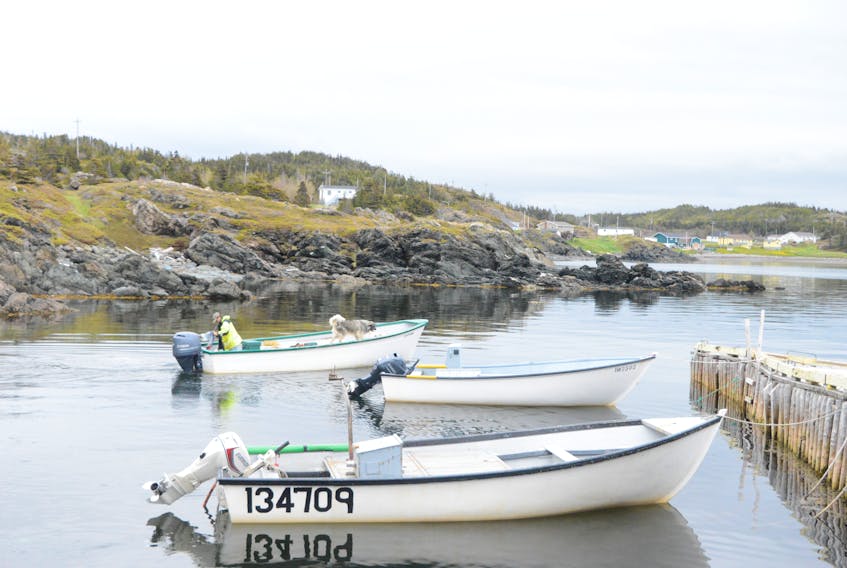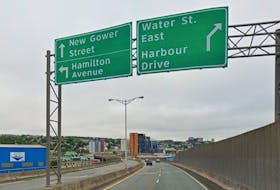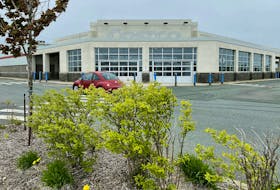
Since he was 12, Trent Emberley fished with his father.
Now many years later, they still fish together.
This generational bond through fishing was common throughout the lineages of Newfoundland and Labrador. But today, many in the province are calling it a rare sight.
Even rarer, now at the age of 23, Emberley has signed off on his own inshore fishing enterprise. With his required five years experience as a full-time harvester, his level II certification, and massive investments for his boat and quotas begun, the Southern Harbour man has laid the foundations for a career in the industry.
Emberly recognizes his situation is a bit of an anomaly.
“There’s a scatter younger fellow at it but it’s not as plentiful as you’d like it to be,” he said. “It’s hard to get into the fishery now because they want so much for these licenses and the quotas are so low. It’s a job to pay up and go for it.
“It’s a great racket, I love it and I wouldn’t do anything else. But it seems like so much is in place to drive you out of it.”
Continuing a legacy
After 13 years, Port de Graves resident Stephanie Lights gave up a hairdressing career to raise her family.
When she returned to work, Lights decided not to return to the salon and instead went aboard her father’s fishing vessel.
For the past two years, she worked full time with her father and began her courses at the Marine Institute to begin a new life as an inshore harvester.
Then, while out on a caplin trip last year, Lights’ father dropped to his death. This loss came suddenly for her, but Lights remains determined in her new career choice.
“My thing is to now try and get through all of this and get the licenses eventually put over in my name,” she said. “I got to know a part of my dad I never knew growing up. Passion for fishing went through my dad’s veins and now I got a good taste for it. It’s pretty intimidating to give up one career and go into fishing, but I feel I’m just as passionate as my dad was. This is something I want to do for myself, for my family and for my dad.”
Since January, she has been taking courses at Marine Institute, preparing for crew changes since her father’s passing and continuing to raise two children. For Lights, it is still a long road ahead to take over her father’s enterprise.
“It’s tough. It feels like you’re running into brick walls all the time,” she said. “It’s a lot of pressure to get your courses done and still make the time to get on the water. ”
Battling the uncertainties
With a longliner purchased from Nova Scotia and quotas for crab, cod, scallop, lobster and herring, so far Emberley has an investment of $220,000 to tackle. This pricetag comes as his first step to being an owner of a core enterprise.
For anyone who desires a future in fishing, he says this financial investment alone places the biggest obstacle.
“You’ll never be without debt at this racket,” said Emberley. “And you’ll always be investing more, either buying another license, new gear, or something.”
To make ends meet, he will be fishing almost year-round – continuing to fish offshore with his father and spending his first summer at his own inshore enterprise.
“I won’t make nothing at my own license. Where it’s not much quota it’ll all be invested back into my payments,” he said. “It’ll pay off in the long run but it’s going to take a while.”
Emberley stresses the need for financial assistance and the importance of good quotas. Crab is now at risk of more cuts, and the current price for cod will not mean a major return on his 30,000-pound quota.
“I wish the [Fish, Food and Allied Workers] union would do more for our quotas,” he said. “There’s all kinds of halibut and we’re not allowed to catch anything. If they could only give us a 10 per cent by-catch out of the amount of cod you catch or something. At least then you’d make a bit of extra money. Right now, if we (catch) halibut we got to throw it back, even if it’s dead.”
Lights agrees current uncertainties around quota cause a lot of stress for those seeking a future at sea. But she says this has always been the gamble of fishing, and for the people dedicated to the job, the hope for replenishment is always there.
“There’s always been cuts in the fishery but there’s always replenishment somewhere along the line,” she said. “You just got to know how to keep going - stay persistent, stay hopeful and keep going with it.”
A statistical disconnect

As the average age of inshore harvesters in the province goes up, Kimberly Orren, with Fishing for Success, says this need for new people to take over enterprises is hitting a crucial point.
“A majority of the fishers in this province are now in their 50s or 60s,” she said. “If there is a wave of 60 per cent retiring, which could be what we’re looking at, there won’t be enough qualified people to take over.
“If, 10 to 20 years down the road, you have a sudden huge number of fishermen retiring and you haven’t provided the necessary access for young people, than what do you do?”
With her Petty Harbour-based initiatives, Orren has worked tirelessly to promote the cultural and economic significance of the fishery to the younger generation of the province. She sees an active promotion of both the cultural bond of fishing and the career potentials of the industry as vital for keeping rural areas prosperous.
“Today we don’t see the access to boats that we once had. Overwhelmingly, people don’t see a connection to the fishery. It was just something their parents or their grandparents did,” said Orren. “If we’re taking fishing out of the realm where it used to be, where it was a family activity and is now an industrial thing, we have to think of how we can make this a career option. How can we make fishing appeal to young people like other careers?”
In the 2014 academic paper, “‘The fishery went away’: The impacts of long-term fishery closures on young people's experience and perception of fisheries employment in Newfoundland coastal communities”, interviews and survey results with young people across the province’s shores showed a largely negative or uncertain outlook towards fishing as a career choice. In towns with active fishing enterprises or fish plants, 57 per cent of those surveyed aged 16-29 did not see job opportunities in the fishery.
Recently, Orren spoke to a high school class about a career on the water, after the class’s teacher was shocked to know words like fillets or activities like salting fish were completely foreign to the students.
If the province does not take serious steps to educate and promote the industry, Orren says the lack of fishery knowledge among the province’s youth will only grow.
“Every young person should experience fishing,” Orren said. “It’s an experience that connects people to nature, at a time where so many grow up with a complete disconnect to nature. A fishery is fish and people. We have to ensure a place for both of them.”
Part two of Fishing for the future: Routes to a better fishery will go more in-depth into the specific criteria to owning an inshore fishing enterprise, and how key players in the industry either defend or desire change with this criteria.









